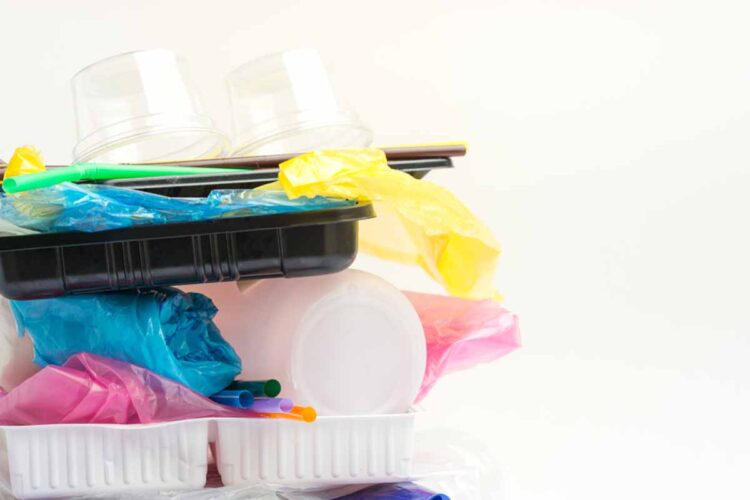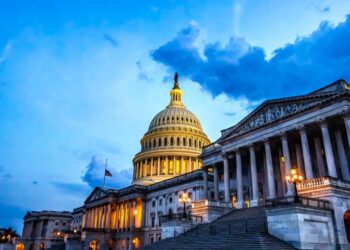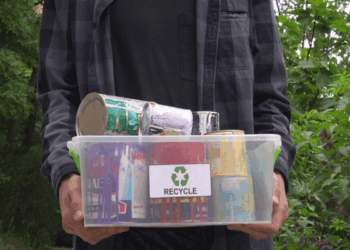California legislators introduced a bill that creates a packaging stewardship organization and adds packaging fees paid by producers. The bill is the latest in a flurry of plastics-related legislative activity in the state.
Assembly Bill 842 was introduced in February and will be substantially amended likely this week, according to updated bill text shared with Resource Recycling. Officially titled the California Circular Economy and Plastic Pollution Reduction Act, the bill contains some elements of previous extended producer responsibility (EPR) proposals and some new components, such as a 75% post-consumer-recycled-content mandate by 2035. EPR is a policy that shifts the financial costs of recycling onto product manufacturers.
The bill is sponsored by Assemblymember Cristina Garcia, a Democrat representing California’s 58th District in the Los Angeles area, and Assemblymember Adam Gray, a Democrat representing the 21st District, which covers Merced County in the state’s Central Valley.
The bill establishes a “comprehensive stewardship program” and provides “a disincentive for continued production of plastics that are not recyclable in California,” according to a fact sheet summary of the legislation. Producers would form a stewardship organization and implement a plan to reach a 75% recycling rate for single-use plastic packaging and products by 2032. The bill also requires that, by 2035, all single-use plastic packaging and products distributed in California include 75% post-consumer recycled content.

Additionally, the bill establishes methods of incentivizing design for recyclability and source reduction. Beginning in 2023, producers would begin paying per-unit fees for packaging, with the amount assessed based on the recyclability of that product. Hard-to-recycle packaging would be assessed a 1-cent fee for each item, and non-recyclable packaging would see a 2-cent fee.
The bill identifies an initial list of hard-to-recycle packaging that includes products made with plastics Nos. 3 (PVC) and 7 (other). An initial list of non-recyclable packaging includes products made from oxo-degradable additives, plastic No. 6 (polystyrene), and multi-layer and multi-material packaging “such as laminates, pouches and cartons.”
Only products made from PET are included in an initial list of “easily recyclable” plastics. All of the lists would be evaluated at least every two years and updated based on new determinations of recyclability. The bill lays out criteria for how that will be assessed, including whether a material is regularly collected and processed into feedstock for new products.
The fee revenue would go toward market development efforts, among other projects.
“The money would have to be spent here in the state, to make sure we have not just the technology but the markets for these plastics to develop,” Garcia said in an interview.
She said the bill incentivizes source reduction by offering credits for producers to offset the costs they pay into the stewardship organization.
Additional proposals target recyclability, labeling, exports and more
Last week, numerous California lawmakers announced a host of bills impacting plastic packaging and recyclability.
The group announced the legislative package on March 9. Among the proposals is a modified Senate Bill 54, which has been introduced in each of the past few years and previously contained some of the components of the new EPR bill referenced above.
The modified SB 54 “requires producers to reduce disposables by right-sizing packaging and shifting to reusables where possible” and “sets ambitious recycling and composting requirements for the material that does enter the state, requiring all disposable packaging and food serviceware to be truly recyclable or compostable by 2032.”
The package also includes bills modifying the requirements for labeling a product as recyclable; implementing minimum-recycled-content standards for state agency procurement; prohibiting the use of plastic film in e-commerce packaging; establishing a refillable beverage container program through the state’s container deposit program; adding a recycled-content requirement for plastic thermoforms, beginning at 10% and phasing up to 30%; and more.
The California legislative session convened in December and will continue through Sept. 10.


























